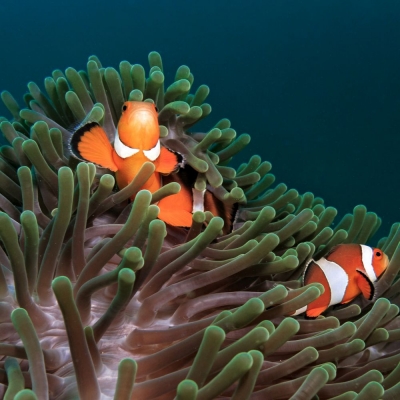
The planet is home to billions of organisms and none of them (including humans) exists on its own. We are all dependent on each other for our survival. Symbiosis is the umbrella term used to refer to such interactions among animals, birds and plants of different species living together. There are five main symbiotic relationships: mutualism, commensalism, predation, parasitism, and competition Mutualism is the relationship where both the species benefit from each other, in commensalism one species benefits from another, while the other remains unaffected in predation and parasitism, one benefits by harming the other while a predator kills its prey immediately, a parasite lives at the expense of the host species and may kill it over time Competition is the struggle between different species to utilise the same limited resources Today, let’s take a look at some of the species that share mutualistic relationship with each other.
Zebra and Ostrich
Zebras and ostriches are perfect examples of friends having each others’ back. Herds of zebras and of ostriches often travel across the open African plains together and they warn each other of danger. Ostriches have a poor sense of hearing and smell, while zebras have a poor eyesight. Zebras look out for potential threats to the ostriches by using their exceptional hearing skills, while the far-sighted ostriches stay vigilant towards the zebras predators by scanning the grassland and spotting threat from afar.
Clownfish and Anemone
There are 30 species of clownfish and all of them form a mutual relationship with anemones. They are even called anemonefish. A sea anemone is a predatory marine animal that lives attached to rocks and catches prey by injecting venom from its tentacles. Clownfish are immune to the anemones venom and actually live within their tentacles. While sea anemones provide protection to the clownfish, the fish clean the anemones tentacles, keeping them free from parasites. Clownfish also lure anemones prey towards the tentacles by acting like baits.
Humans and Honeyguide bird
An African bird called the greater honeyguide is famous for sharing a friendship with hunters. It helps humans locate bees’ nests to harvest honey. Honeyguides give a special call to attract people’s attention, then fly from tree to tree to indicate the direction of a bees’ nest. While humans get honey, the birds get to feast on bee larvae and wax. Honeyguide perhaps consider humans useful collaborators because of our ability to control stinging bees with smoke and use tools to open the honeycomb, which the bird cannot do on its own.
Ants and Aphid
Several species of ants and aphids share a well-documented mutualistic relationship. Aphids are small insects that feed on the sap from plants and secret a sugary-liquid called honeydew. This secretion is quite enjoyed by some species of ants. The ants milk the aphids by stroking them with their antennae and in return, the ants protect the aphids, pretty rigorously, from predators and parasites.
The ants ensure the aphids are well-fed. They move the insects to a new plant when the nutrients from the host plant are exhausted. Some species of ants go to the extent of destroying aphid predators’ eggs. Some species of ants care for the eggs of aphids by transfering them to their own nest during winter. When the eggs hatch, the ants carry the newborns to host plants to feed. They secret the sugary meal for the ants and the cycle continues.
Bat and Pitcher plant
Pitcher plants are carnivorous plants that trap their insect preys by luring them with nectar. The unassuming insects fall down the slippery slope and eventually drown in the digestive liquid of the plant. While we might think it would be prudent for animals to avoid these plants, woolly bats voluntarily clamber inside the plants – to roost. They share a mutually beneficial relationship with the plants. So what does the plant get in return for subletting its comfy room to the mammal? Poop. The bat guano (waste) is rich in nitrogen, a crucial plant nutrient, you see!
Picture Credit : Google




